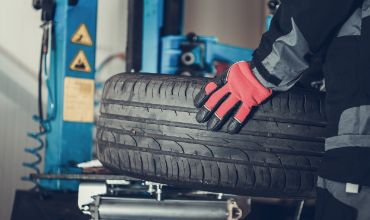It’s important to keep your vehicle in good working order. Part of that is making sure the tires are properly inflated and rotated. But what’s the difference between tire rotation and wheel alignment?
Tire rotation is simply moving the position of each tire around the vehicle. This evens out wear and tear, as all four tires will share the load evenly over time. Wheel alignment, on the other hand, adjusts the angle of the tires so they’re perpendicular to the ground and pointing straight ahead. This is important for optimal handling, traction, and fuel efficiency.
Let’s take a closer look at each service:
Tire Rotation
As we mentioned, tire rotation is just changing the position of your tires. You’ll typically want to do this every 5,000 miles or so. Many automakers include tire rotation in their recommended maintenance schedules, so be sure to check your owner’s manual.
There are a few different ways to rotate tires, but the most common is the “forward cross.” With this method, the front tires are moved to the rear (but stay on the same side of the vehicle) and the rear tires are moved forward. This puts the less-worn front tires in the back, where they’ll get less traction and wear down more slowly.
Wheel Alignment
Wheel alignment is a little more complicated than tire rotation. To align your wheels, a technician will need to measure the angles of your tires and adjust them as necessary. This is important because it helps your car handle properly and can improve fuel efficiency.
You’ll usually need to get your wheels aligned if you notice that your car is pulling to one side or the other, or if you hear strange noises coming from the suspension. Many automakers recommend getting an alignment every 12 months or 12,000 miles, so be sure to check your owner’s manual.
So, there you have it! The next time you’re at the garage for an oil change or tire rotation, ask the technician if your car could benefit from a wheel alignment as well. We can provide both services for you at Collegeway Auto in Mississauga.







